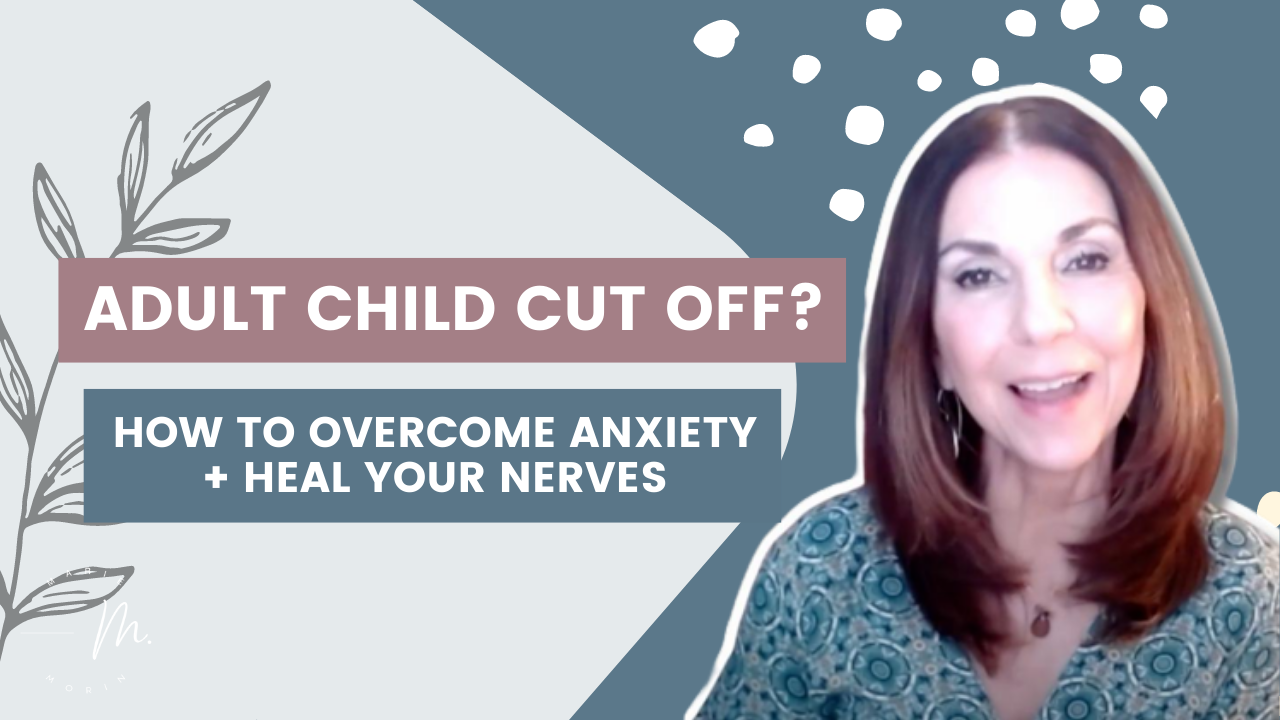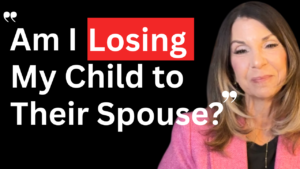Estrangement hits a quarter of the U.S. population, leaving parents and family members in the wake of emotional upheaval. Some choose to cut off due to abusive and toxic family behaviors. For parents of adult children, however, it can be bewildering and highly distressing in the absence of maltreatment. Anxiety and depression, and chronic stress are often the results of the uncertain and ambiguous condition of being emotionally and or physically separated. Feeling stressed and worried takes its toll on physical and mental health. This article discusses anxiety and what to do to rebuild your emotional state, thereby preparing for a challenging journey and the potential for reconciling.
Parents may experience grief, anger, denial, and feeling dumbfounded. Anxiety is the state of focused worry about what the future will bring when anxious and estranged. Stress and physical sensations are the body’s necessary mechanism to alert one to perceived or actual threats to safety. Typically, in the parental cut-off, parents viscerally feel the loss of the relationship and experience the distressing effects. Finding calm, gaining perspective, and getting active is necessary to sustain and replenish the mind and body so one’s nervous system can repair.
Find Calm
When we are stressed and upset, we may resort to letting them know a few things in ways that might provoke them. Take your emotional temperature by gauging your agitation, anger, hopelessness, and anxiety level. You can find calm by using a breathing technique that intentionally brings your internal stress level down.
Four Seven Eight Breathing
Find a breathing technique that works; there is diaphragmatic breathing and the 4 7 8 methods.
Anxiety can feel awful but having tools to help lessen the sensations and thoughts can be highly effective. You can always use your breathing techniques whenever you need to calm down. The 4-7-8 breathing technique is easy to remember. It is best to practice this when you are relaxed to be familiar with its quieting effects.
The 4-7-8 breathing technique involves breathing in for 4 seconds, holding the breath for 7 seconds, and exhaling through the mouth, making a whoosh sound for 8 seconds. Practice at first doing this for three to four rounds. Optimally, practicing daily and increasing rounds will bring more significant relaxation effects cumulatively. This technique can also help when you’re having trouble falling asleep or staying asleep.
Diaphragmatic breathing is purposefully breathing air beyond the upper chest and respiration into the abdomen. Often, the tendency, either with or without external stressors, is to practice shallow breathing, where air remains in the upper cavity of the chest. For optimal stress management, learn this pattern again, and find your rhythm of calm.
Diaphragmatic Breathing
Before you begin, set aside time where you can be relaxed, alone, and comfortable. You may sit in a chair fully supported with your spine straight and your feet flat on the floor. You can lie down on a mat or bed with your head slightly cushioned for comfort.
Become aware of your breathing. Place one hand on your chest and one hand on your belly. Breathe deeply through your mouth, keeping your chest still while bringing the inhale deep into your stomach. Pay attention to counting to three while extending your belly with the inhaled breath. Find a regular rhythm of breathing while keeping the same depth of breath.
Notice your hand on your belly rise as though your belly was a balloon filled with air. Exhale, to the count of will be to the count of four. Your chest should have tiny movement, none if possible.
Gently contract your belly as though your belly button could meet your spine and slowly release the air. Your breathing rate will slow down if you take a short pause after each inhales and exhales. Remember to keep a steady rhythm.
With each breath, see if you can intentionally exhale a little longer with each exhale. At first, practice this method by doing three breaths this way. As you practice, preferably three to four times a day, increase the number of practice breaths until you can comfortably breathe this way for ten minutes.
When your practice is ready to complete, take one more deep breath and open your eyes.
Notice how you feel. Are you more relaxed? What is different now after your practice than when you began? Notice the difference in your state of calm. Remember, you can always use this practice at any time and place.
Should you feel lightheaded, take a break and return to your practice later. Try not to take in more air than you need. Let your body guide you.
Gain Perspective
Parents wishing to repair and reconcile with their adult child will benefit by preparing to go the distance. Unfortunately, there is no guarantee, no definite timeline, or magic wand. Much of the angst around this condition is the uncertainty. Not knowing what someone is out of your control will decide and when they decide is stressful. Your best method of coping will be to manage and control what you do.
Sadly, you have no idea how long the estrangement will last or how or if it will be resolved. Anxious thoughts can move into excessively negative future projections. If you find yourself landing in this territory, notice and be aware, then stop. To gain perspective, remind yourself that uncertainty is part of life and not getting what you want.
Gaining perspective is possible with the determination to reframe what you are thinking. While it is true that being cut off can be an insufferable state, however, you can control where your thoughts will land. Practicing mindfulness will strengthen this skill.
Mindfulness
Mindfulness is paying attention to what is happening in our thinking and feeling by staying in the moment. Simply, it allows us not to get caught in the anxiety of uncertainty and past problems. We become more focused and attentive to experience, which helps us to calm. Mindfulness improves our confidence by making better choices because we’ve slowed down to respond and not react.
Get Active
Movement and social involvement are extremely vital during stressful times. Typically when anxious, mild depression follows. An excellent method of counteracting the anxiety and stress of estrangement is to get active and stay active.
Movement
Movement and exercise are excellent stress reducers. Taking a brisk morning walk and breathing fresh air for twenty minutes can calm anxiety. The benefits received are worth the effort to commit to any movement practice you prefer. The top 5 ways exercise, and movement reduces stress involve the brain’s immediate and long-term response to neurotransmitters and BDNF. Exercise increases the natural antidepressant BDNF, which improves motivation and confidence.
Positive perceptions are gained from engaging in a practice that continues to give rewards beyond just the workout. When one feels good, perceptions get an upgrade as well, and there is a drug-free prescription for stress.
Social Activity
Remember, many of us also struggle with loneliness for our adult kids and perhaps hopelessness. When we are stressed, we might focus on mostly thinking about ourselves. The truth is we are not alone. We are more united with others than we think. If we make the first move to connect with others and make it a priority to remain in contact, fantastic progress in your well-being is available to you. You can join a support group for estranged parents, volunteer, and gather with friends who love and value you.
It may take you to come out of your comfort zone. Progress will come as you relate with others regularly. Stress will be reduced; less stress means feeling better. Taking a walk with a friend or neighbor is a great idea.
Three Tips to Get Connected for Less Stress and Better Health
- Resist the temptation to isolate when things are tough. Make eye contact with people you run into daily. Make small talk. What is the worst that can happen?
- Push yourself to reach out. If you have been out of the loop for a while, start by making a phone call. Talk to the people in your travels, the gas station, the grocery store, and doctors’ offices. Smile with your eyes if you have a mask on. Get out of your routine and contact a friend or neighbor. Be the one who reaches out to others; take a chance. Write a text and invite people over to be outside. You engage in the practice of connecting and encouraging others.
- Don’t wait for circumstances to be perfect. Do your best to challenge yourself. It will get easier if you practice reaching out to difficult family members. Try other stress-reducing practices if you have anxiety.
Anxiety is a normal function in dealing with a threat to our sense of safety.
When we are cut off, depending on how long, our reactions can be one of shock, anger, denial, depression, and anxiety. Unless there has been a mutual cut-off due to abusive or toxic behaviors, you hope to reconcile with your adult child.
Anxiety and the distress it causes can be uncomfortable but not as severe as a panic attack. Pressure from the condition increase stress. Worrying more than what is developmentally appropriate is when anxiety becomes troublesome. Fear does not come on as a sudden event. Individuals with anxiety and or anxiety disorders may overestimate an event or take things out of proportion. Stress can occur from a fear of a situation with ideations or thoughts and sometimes avoidance behaviors. Anxiety is not sudden but can vary in intensity from day to day.
Estrangement hits a quarter of the U.S. population, leaving parents and family members in the wake of emotional upheaval. Some choose to cut off due to abusive and toxic family behaviors. For parents of adult children, however, it can be bewildering and highly distressing in the absence of maltreatment. Anxiety and depression, and chronic stress are often the results of the uncertain and ambiguous condition of being emotionally and or physically separated. Feeling stressed and worried takes its toll on physical and mental health. This article discusses anxiety and what to do to rebuild your emotional state, thereby preparing for a challenging journey and the potential for reconciling.









